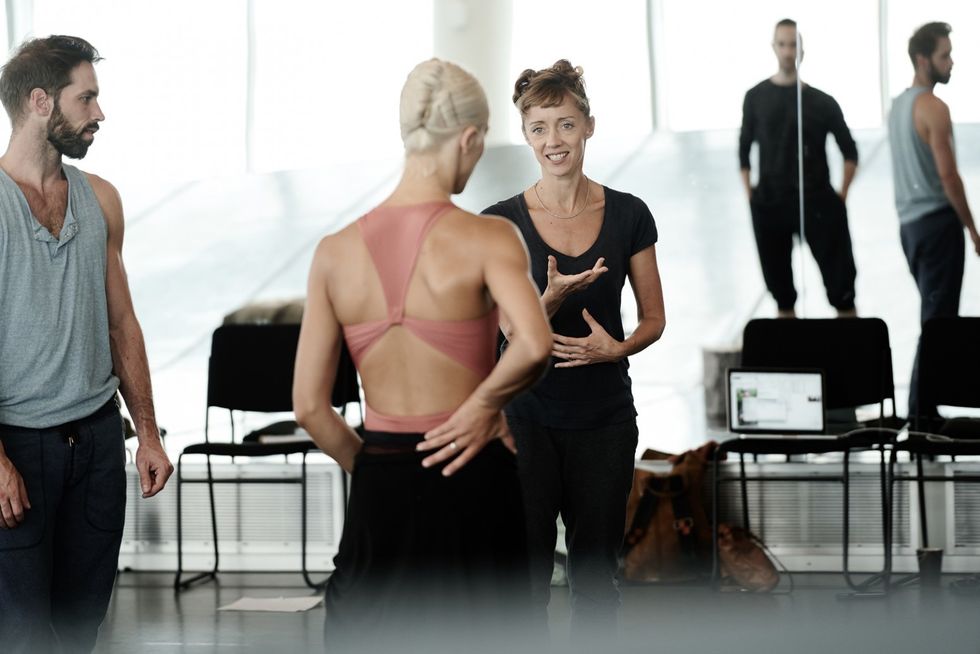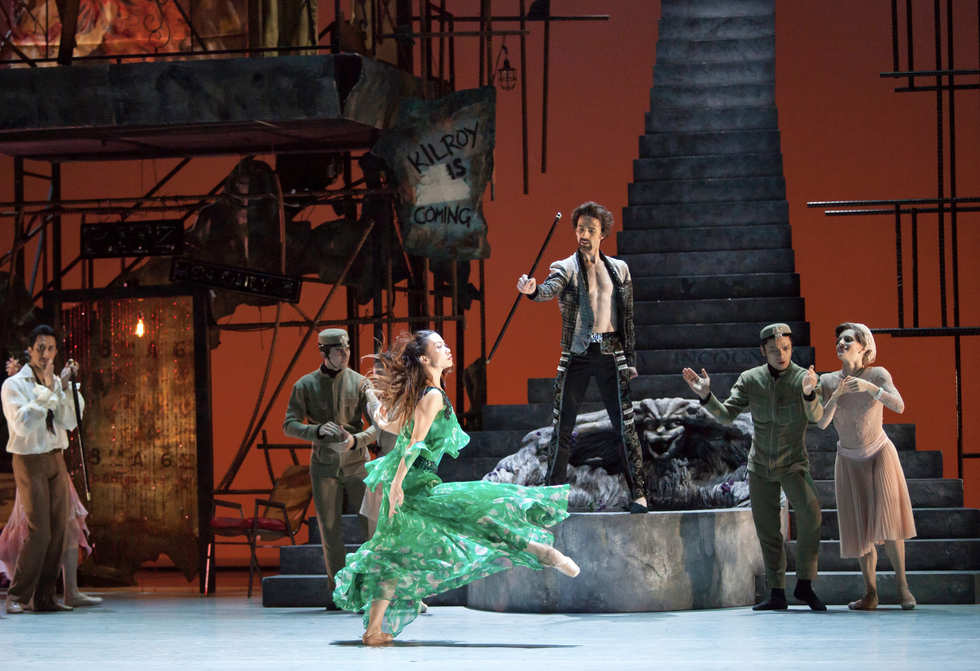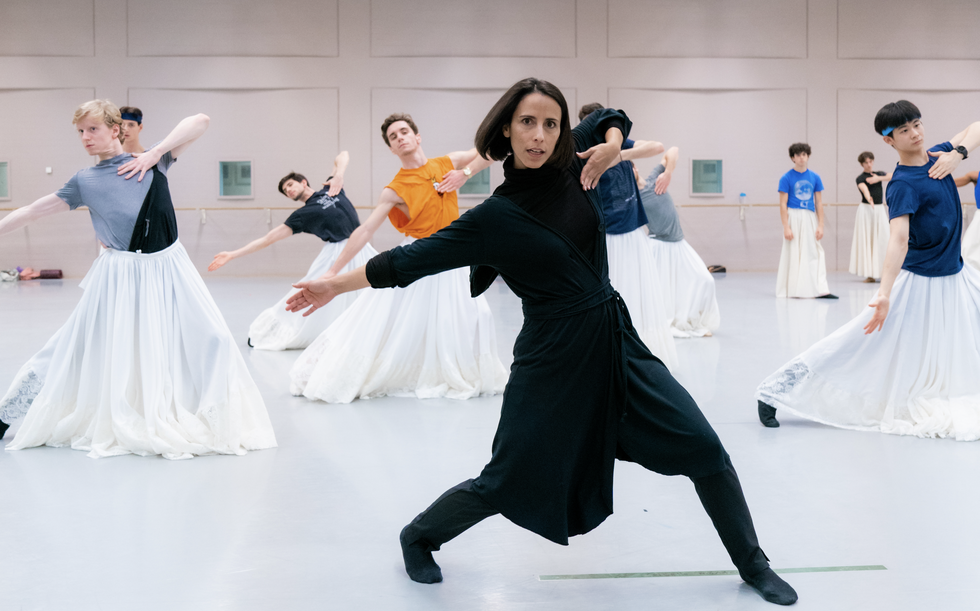Female Choreographers Are Reimagining What Story Ballets Can Be
An iconic yet tortured female painter. A mistress wrapped up in a witch hunt in an early American colony. A talented cellist whose life ended prematurely after her battle with multiple sclerosis. These women are a far cry from classical ballet’s standard fare of supernatural fairies, sylphs and swans. But some female choreographers are starting to bring stories like theirs to major ballet stages.
Although narrative ballets have existed almost as long as the form itself, those framed through the female gaze have been historically rare. As contemporary choreographer Pam Tanowitz unapologetically commented in a 2016 New York Times article, “There is the famous quote from Balanchine: ‘Ballet is Woman.’ Well, it’s a woman made by a man.”
Today, there is a thrilling, 21st-century wave of story-driven ballets choreographed by women. What are their perspectives, and the stories they choose to tell, adding to ballet’s canon?

Sasha Onyshchenko, courtesy Marston
The History Behind the Trend
Ballet as a vehicle for story dates to the 1700s, and one of the originating choreographers was a French woman. “Marie Sallé pioneered pantomime as a way to carry story forward in ballet, which she first brought to the main stage in her Pygmalion,” says UCLA dance professor Susan Leigh Foster, author of Choreography & Narrative: Ballet’s Staging of Story and Desire.
In the 1800s, a capitalist overhaul to save Paris Opéra Ballet led to a new genre of story ballet which enticed male supporters to fetishize female lead ballerinas. Choreographers also drew from earlier Romantic literature for inspiration for ballets such as La Sylphide. “We saw the introduction of supernatural creatures, and frequently narrative closure requiring female death,” describes Foster.
Several women continued to push narrative ballets forward in the 20th century, including Bronislava Nijinska and Dame Ninette de Valois, and the boldly American choreographer Agnes de Mille. Through the rise of abstract ballets in the last 60 years, ballet companies filled choreographic gender gaps with iconic modern and contemporary works by Pina Bausch, Trisha Brown, Martha Graham, Twyla Tharp and, more recently, Aszure Barton, Anne Teresa De Keersmaeker, Jessica Lang, Crystal Pite and Pam Tanowitz.
But their contributions, by and large, were not story ballets, and it has only been in recent years that new narrative works have seen a resurgence in popularity—due in no small part to conventional box office wisdom that stories sell tickets.
This goes hand in hand with the push for the appearance of gender equity in commissions. In recent years, ballet companies have publicly committed to filling the need for female choreographers through incubator initiatives and programming. (Also not to be overlooked: More women are directing major companies than ever before.) While there are still fewer women than men commissioned to choreograph narrative ballets, the statistics are shifting as companies reevaluate the voices being offered opportunities.
Put together these two trends—the renewed popularity of narrative works and the need for companies to be seen commissioning more women—and you have the formula for female-choreographed story ballets.
Finding Home in Story
“Story ballets have been my passion for about 25 years—it’s not really new for me,” says British choreographer Cathy Marston. “Narratives have come back into vogue, and big-scale works have proven to be winners for companies.”
Notoriously a bookworm, Marston was profoundly influenced by her English-teacher parents, who fueled her passion for literature and theater. “I seek to find stories I’m convinced by and tell them in a fresh way,” she explains. “I have not set out to explicitly tell women’s stories or feminist perspectives.”
Yet undeniably, her life experiences as a woman, wife and mother of two guide her approach to storytelling. She has choreographed 30 original narrative ballets, including her widely acclaimed Jane Eyre and other literary works such as Wuthering Heights, Lolita and Lady Chatterley’s Lover.

Camino Real Charlie McCullers, Courtesy Pickett
Like Marston, Helen Pickett’s storytelling ideology was shaped by her parents, who were both actors. As a performer, “stories always meant more in my skin and my body,” explains Pickett. Her father suggested the source material for her first full-length by handing her his dog-eared copy of Tennessee Williams’ Camino Real, which she created for Atlanta Ballet in 2015. “It felt like home!” she says of choreographing a story. Last year, Scottish Ballet premiered Pickett’s The Crucible, based on Arthur Miller’s allegorical play, which has since won several awards and makes its U.S. debut this month.
Similarly, Annabelle Lopez Ochoa has long felt a pull toward narratives. “As a young choreographer my work always had theatrical elements, little stories and human interactions,” Lopez Ochoa says. “But it was not on trend because everyone wanted deconstructed movement.”
As demand for narrative ballets grew, however, the Colombian-Belgian choreographer received her first full-length commission in 2012 for Scottish Ballet: Tennessee Williams’ A Streetcar Named Desire. She has since tackled other story-driven works, such as the Godfather-esque Vendetta, A Mafia Story and the literary Dangerous Liaisons. After first telling Frida Kahlo’s story in 2016 in the one-act Broken Wings for English National Ballet, she then expanded it into the evening-length Frida for Dutch National Ballet. During its premiere in February, it easily sold out its nine-show run.
Multifaceted Women
Over four years of research, Lopez Ochoa learned of Kahlo’s affairs and worked with dramaturg Nancy Meckler, shaping Frida‘s libretto to portray the painter’s agency rather than victimizing her. “I’m sure Frida would have wanted a woman to tell her story,” Lopez Ochoa says. “As women we can expose more layers—sometimes we know we are breaking inside, but we have to keep strong on the outside—and we can be nuanced instead of using clichés.”
Feeding off of Kahlo’s surrealist expressionism, Lopez Ochoa weaves inventive abstractions throughout, playing with gender norms by having a large group of male Fridas dancing as a corps de ballet of self-portraits.

Frida Altin Kaftira, Courtesy Dutch National Ballet
As Pickett began working on The Crucible, she went to Danvers, Massachusetts, to speak with historians and gather new theories about Miller’s characters. The play dramatizes the Salem witch trials, following John Proctor, who must choose between capitulating to accusations of witchcraft or letting his affair become public. Based on her research, Pickett wrote a treatment for the production with Elizabeth, the wife, and Abigail, the young woman with whom he had an affair, at the center.
“I’m looking for stories where the women don’t have to kill themselves. They are on their feet, on the earth with hard decisions to make,” says Pickett. “It’s the man who gives up his life in The Crucible.”
Moving through the world as a woman, she was able to consider ideas between the lines of Miller’s play—imagining that perhaps Abigail did not start as a villain, but her early trauma and youth led to her actions. “I had a plan to tell this story for the strength of the women characters—these witch hunts were a way to take power away from women.”
One of Marston’s most recent projects also reframed a traditionally male-centered story: Charles Webb’s The Graduate. She began researching 1960s America and discovered Betty Friedan’s The Feminine Mystique, which challenged the American ideal of the housewife-mother role, was published the same year. Marston decided to tell the story from the perspective of Mrs. Robinson.
“Mrs. Robinson is a fantasy,” she says. “I wanted to give an ending where she is not just a lonely alcoholic.” Choices like these continue to pull ballet away from antiquated stereotypes and into the contemporary world.
Taking the Lead
From a scholarly perspective, Foster questions whether using ballet as a vehicle for story can fully make a feminist statement, given the patriarchal history of the form. Many early American feminist choreographers denounced ballet, instead pioneering modern and postmodern dance.
“I don’t believe traditional ballet vocabulary can really tell these women’s stories; they need to be grounded and real,” says Marston. Pickett echoes this sentiment: “I’ve experimented with lower, grounded movements, straight ballet language on pointe and bare feet my whole career,” she says.
Sometimes seemingly simple movement choices make the most dynamic statement. The final image in Marston’s Jane Eyre is Jane walking out of Rochester’s embrace, towards the audience. “I felt it would be wrong to diminish her story to a married couple in love, and I wanted to capture the strong first-person voice Charlotte Brontë used by directing her gaze out,” she says.
At The Royal Ballet, to express Jacqueline du Pré’s powerfully physical connection to her instrument in The Cellist, Marston chose to cast a male dancer (Marcelino Sambé) as the cello itself. Lauren Cuthbertson, embodying du Pré, is often behind and supporting Sambé, a striking role reversal. “It is so important for me to express women as sharers of weight, not just givers of weight,” Marston says. “They don’t always need to be lifted and carried around.”




